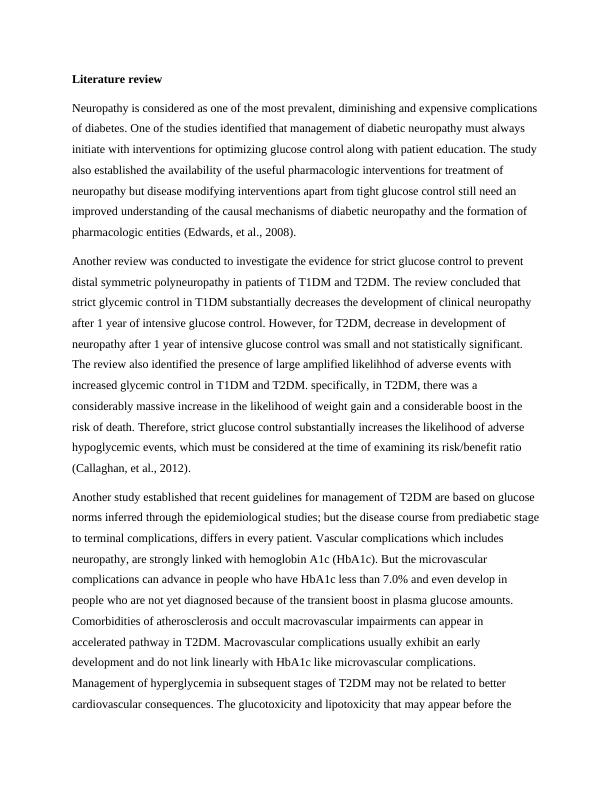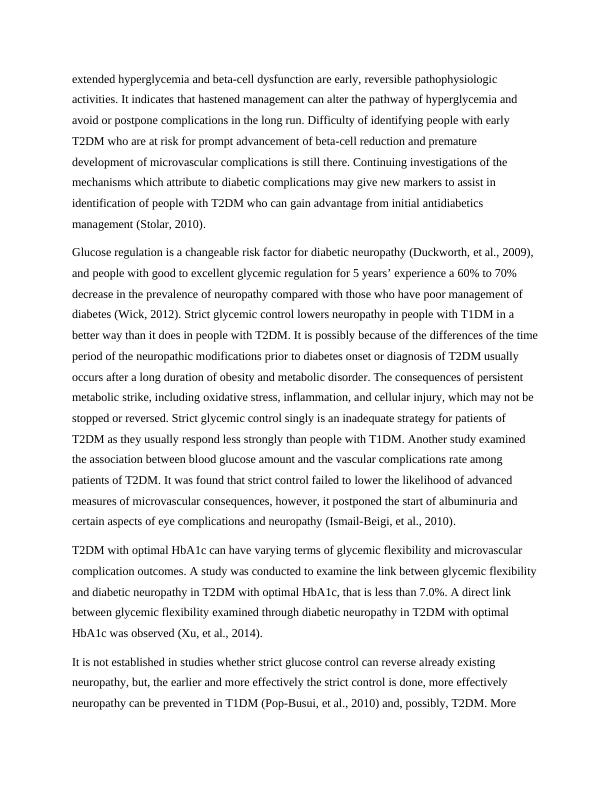Effect of Strict Glucose Control on Development of Diabetic Neuropathy
This assignment is about writing style and presenting data in a literature review. It discusses the structure and content of a literature review and emphasizes the importance of storytelling in academic writing.
6 Pages2039 Words44 Views
Added on 2023-01-23
About This Document
This review examines the effect of maintaining strict glucose control within normal physiological range on the development of diabetic neuropathy among patients with Type 1 and Type 2 Diabetes Mellitus.
Effect of Strict Glucose Control on Development of Diabetic Neuropathy
This assignment is about writing style and presenting data in a literature review. It discusses the structure and content of a literature review and emphasizes the importance of storytelling in academic writing.
Added on 2023-01-23
ShareRelated Documents
End of preview
Want to access all the pages? Upload your documents or become a member.
Role of Mediterranean Diet in Diabetes Management
|9
|2367
|42
Rough Draft-Qualitative Research Critique and Ethical Considerations
|5
|1167
|472
Effectiveness of Strict Glucose Control on Diabetic Neuropathy: A Meta-Analysis
|9
|1616
|87
Evidence Based Nursing Report on Type 2 Diabetes Mellitus Management
|30
|5498
|291
Evidence Based Practice Research: Influence of Treatment Modalities and Knowledge on Depression Across Juveniles With Type 1 Diabetes Mellitus
|10
|2127
|58
Diabetes Mellitus and Associated Pharmacological Treatment
|4
|558
|460



